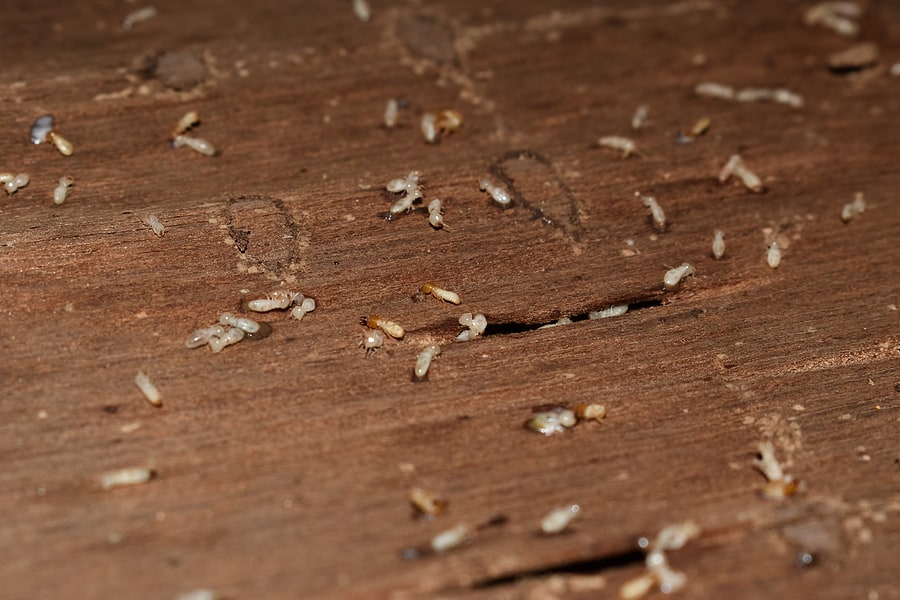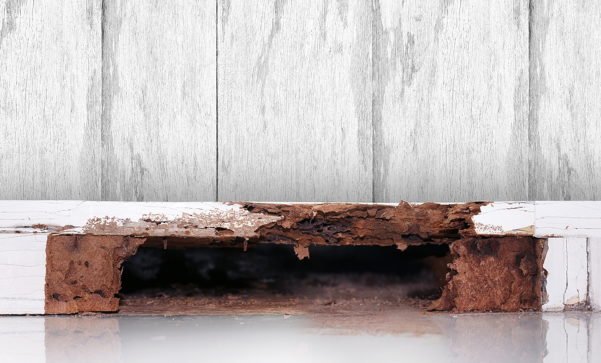READY TO GET STARTED?
REQUEST A FREE ESTIMATE
Fill out the form below or call (888) 466-7849 for a free, no-obligation estimate.

Termites will not stop until they find a food source for their colony, often destroying our homes in the process. A termite infestation can be devasting, as their damage can cost billions of dollars in repair. One of the best ways to avoid their damage is investing in termite control for your Alabama home. Let’s review the signs of termites and the several types of termite treatment options available so you can avoid their devastation.
Termites are silent destroyers, meaning they can go unnoticed for extended periods. However, there are many ways that you can tell you have a termite infestation.
When investing in termite treatment and prevention options, there are three common types of professional treatments that every homeowner should know, including bait stations, liquid-soil treatments, and wood treatments.
If you’re interested in these termite treatment options, consider contacting your local pest control company for more information. These professionals can provide you with a comprehensive inspection and help determine the best termite control plan for you and your home.

Termites are known to cause significant and expensive home and property damage each year. These pests can easily go undetected for a long period of time and, in return, cause substantial damage to your property. Dealing with termites can be a huge undertaking and while you should always reach out to a professional if you have been infested with them, you can take steps to help prevent an invasion.
Keep Dry!
Subterranean termites need an abundant amount of water to survive. These pests will seek out moist and wet areas in or around your home for a new colony site. It’s extremely important to check for any leaky faucets, pipes, and appliances inside your home. Additionally, storm drains should be directed away from your house and draining at least a few feet from your home’s foundation. Making sure there is no available moisture is an easy way to prevent a termite infestation and subsequent damage.
Beware the Mulch!
Mulch can be a great tool to landscape your yard, but not many know that it can attract termites right into your home! Mulch, which is comprised of wood chips, can retain moisture, making it a perfect food source for termites. If you do decide to use mulch, try to keep at least a 4-inch barrier between the mulch and the side of your home. Along with mulch, try to keep shrubbery, lumber, and wood away from the foundation of the house.
Inspect It!
Inspecting your own home is probably the easiest way to prevent termites. Since termites like to consume wood, check for wood damage throughout your home. When wood is damaged it will make a hollow or papery sound when tapped on. Periodically check the exterior of the home. Maintaining your home’s wood siding and window frames help prevent termites from sneaking in. Some signs you have termites are blistering sheetrock, mud tunnels, cracks in the foundation, and discarded termite wings.
If you’ve determined that termites have infested your home, it’s best to call a professional. A local pest control company can provide you with an inspection and the best plan of action for termite control.